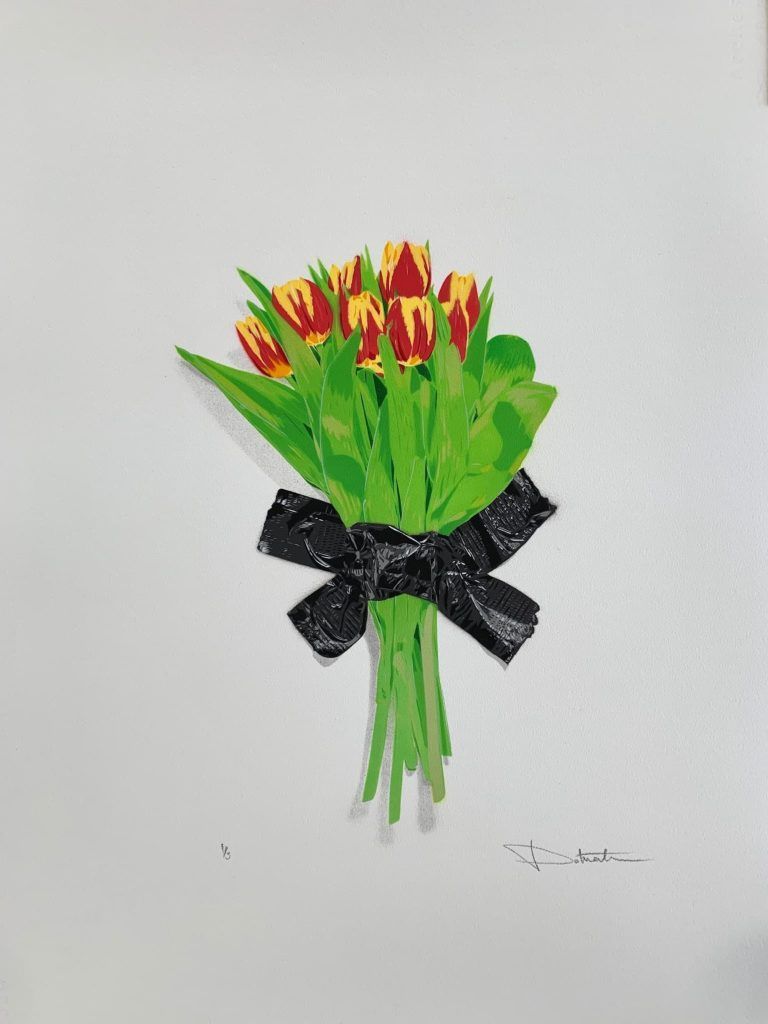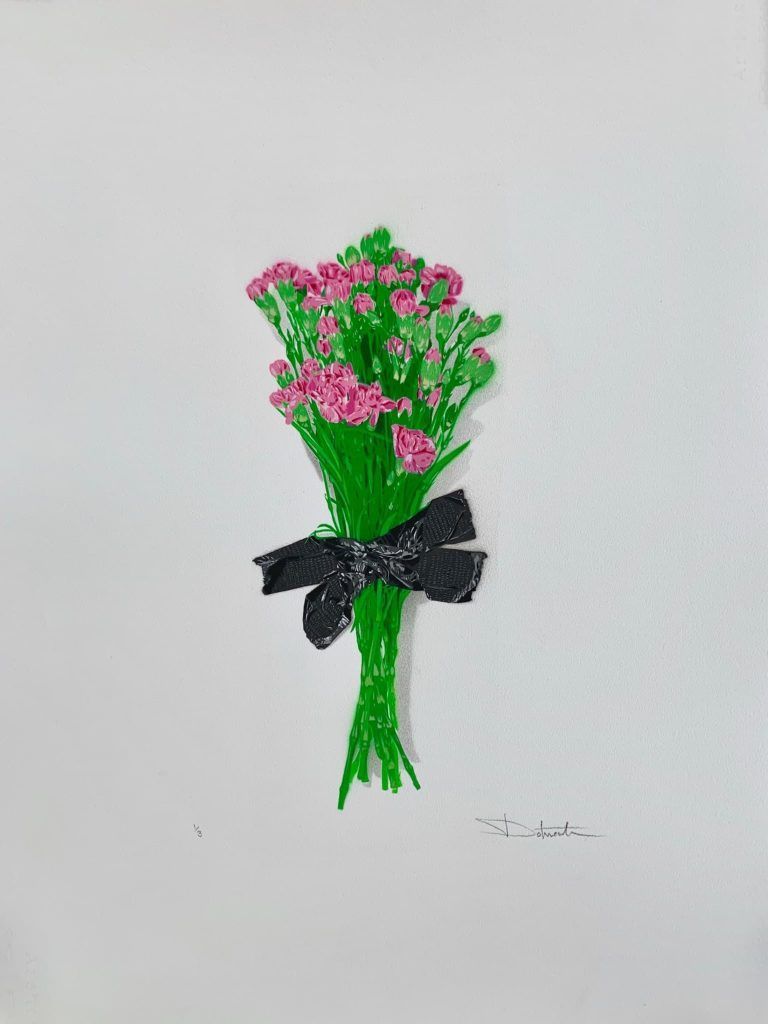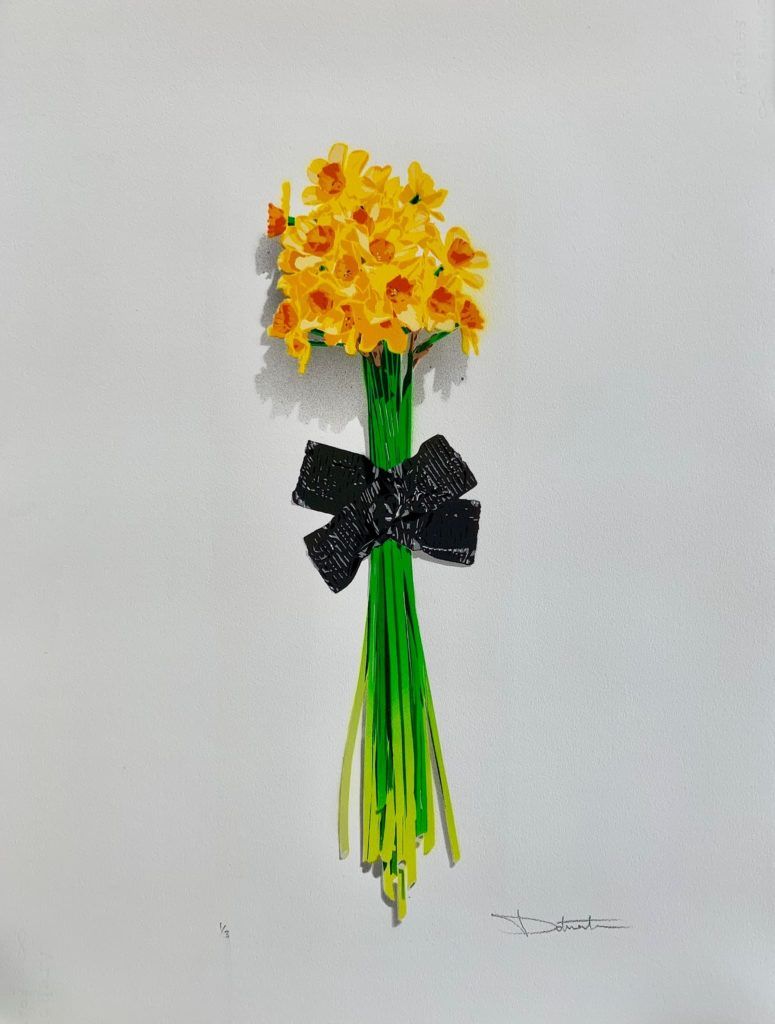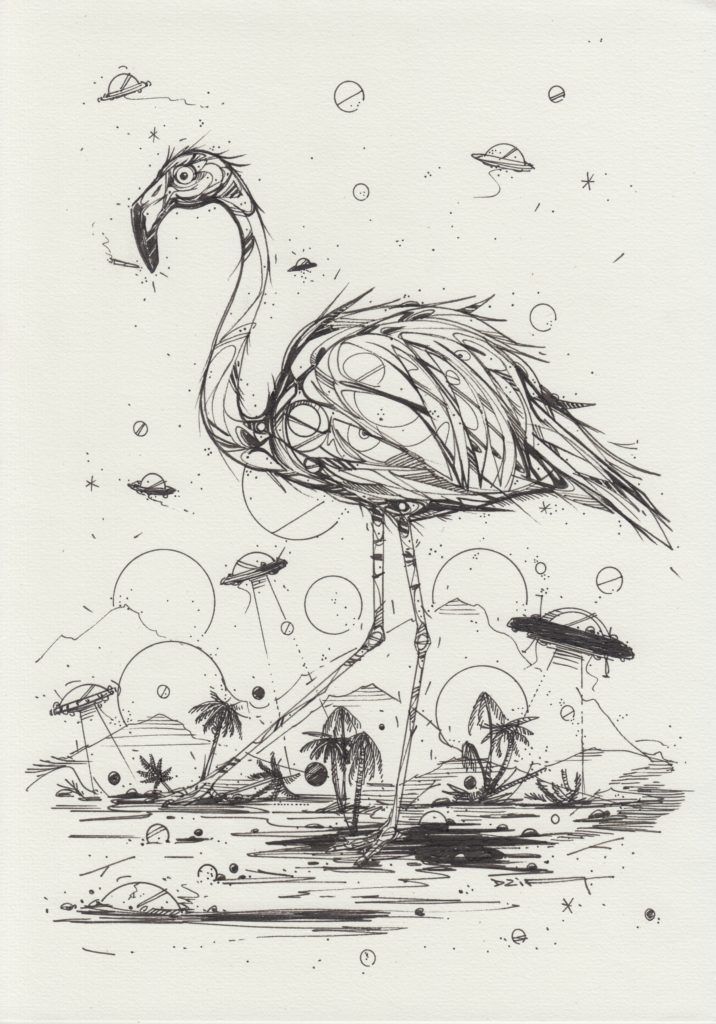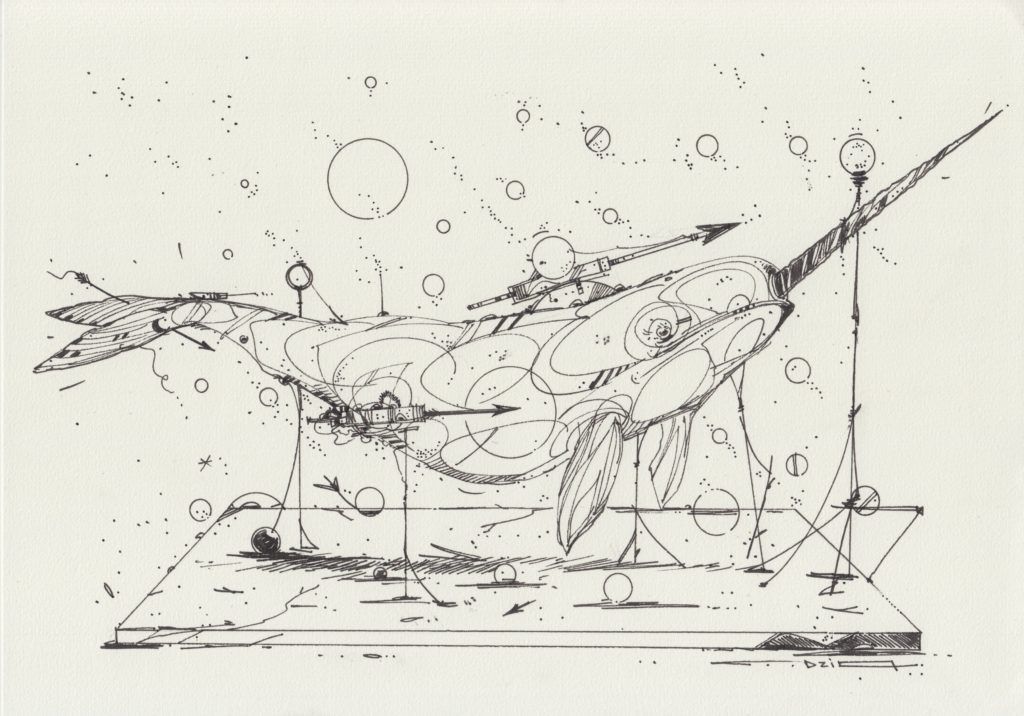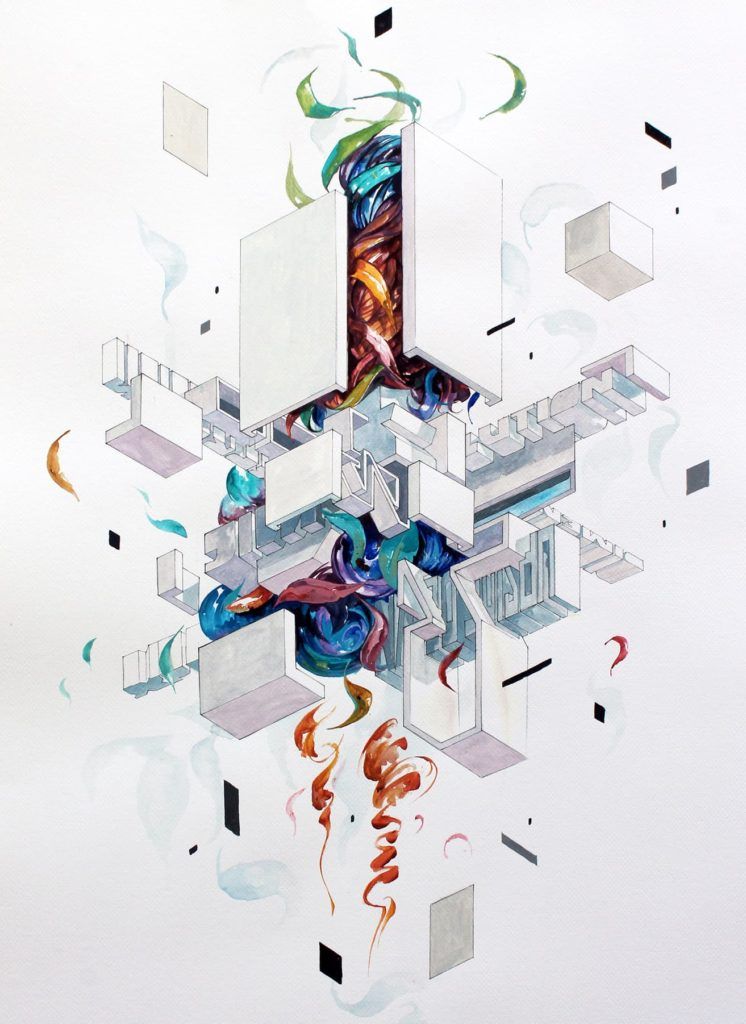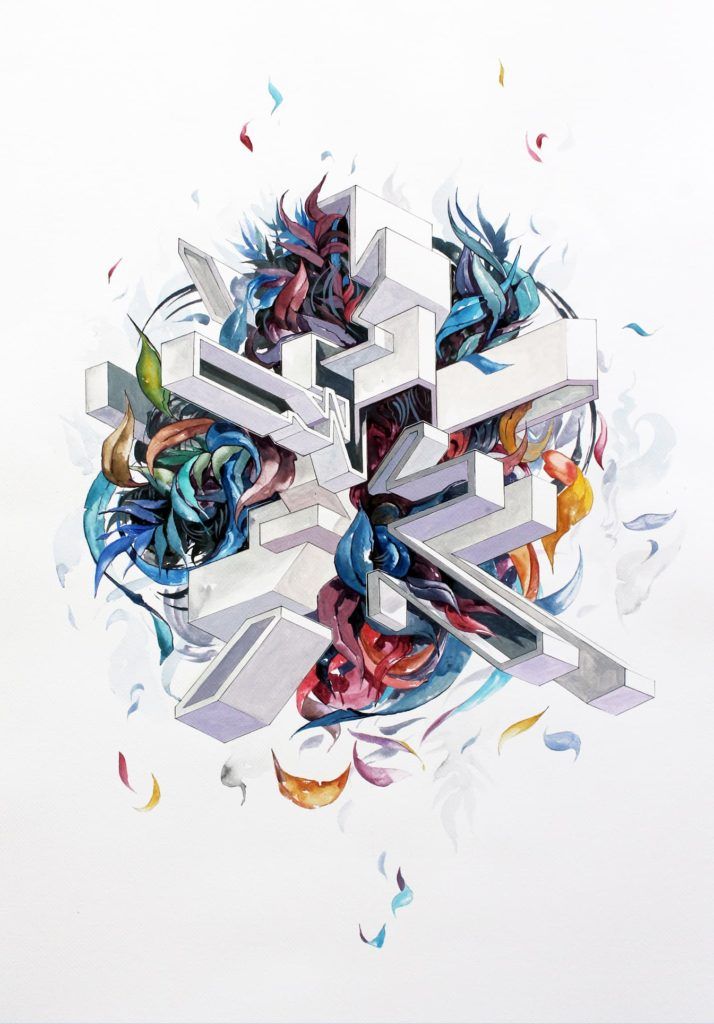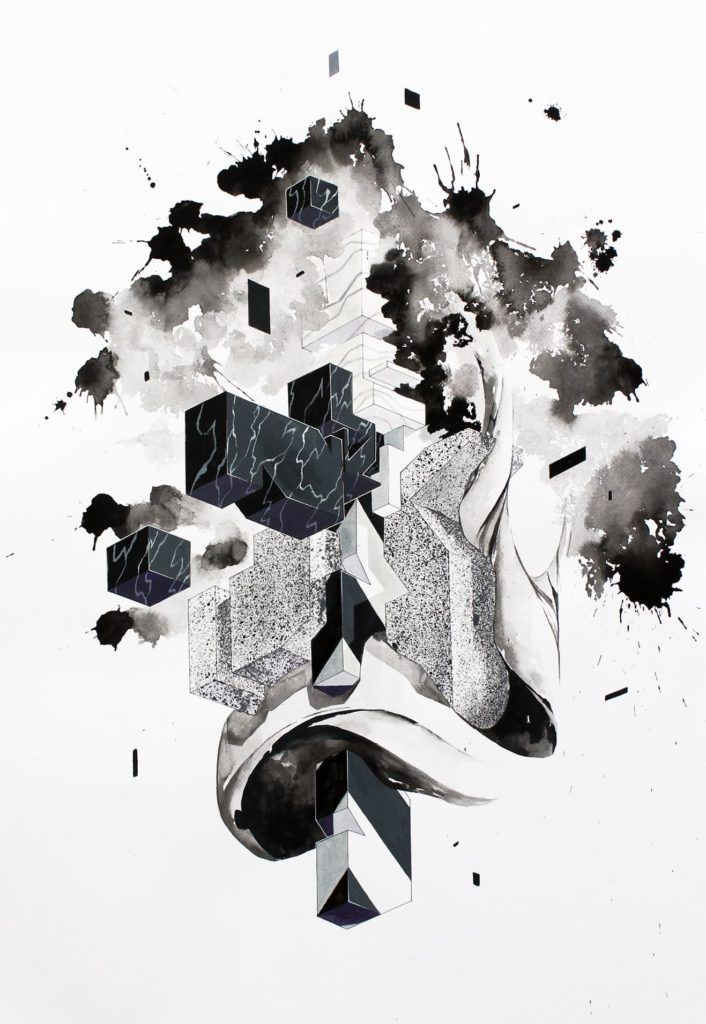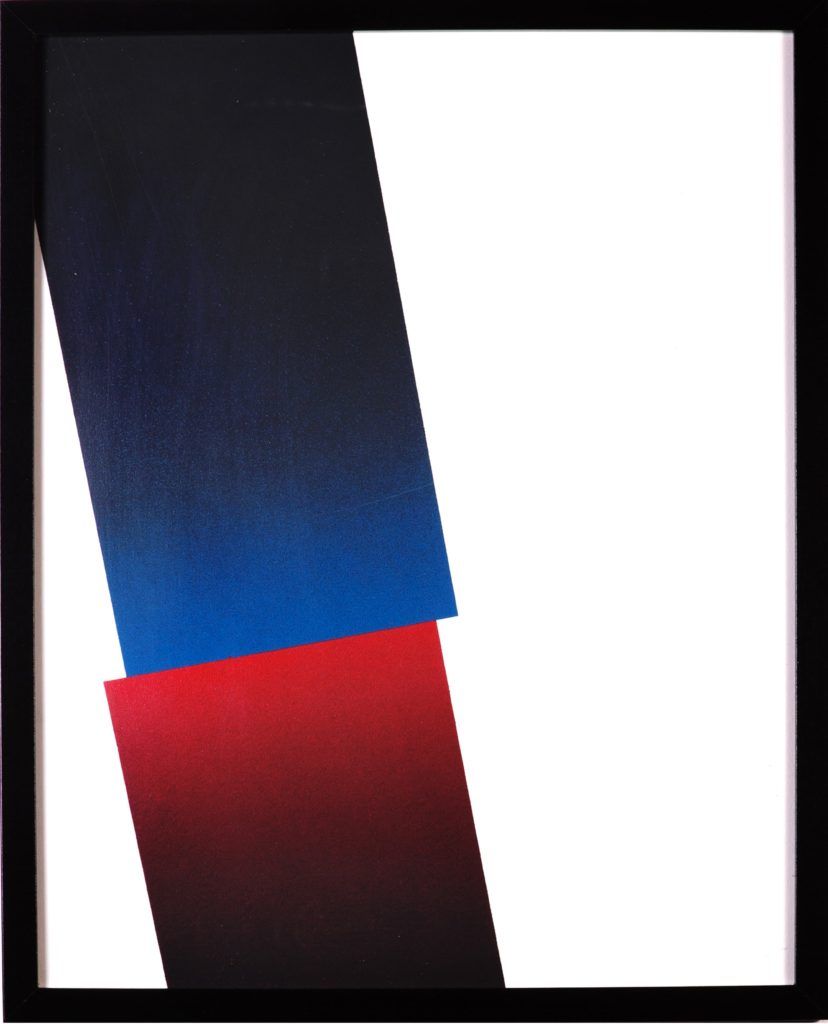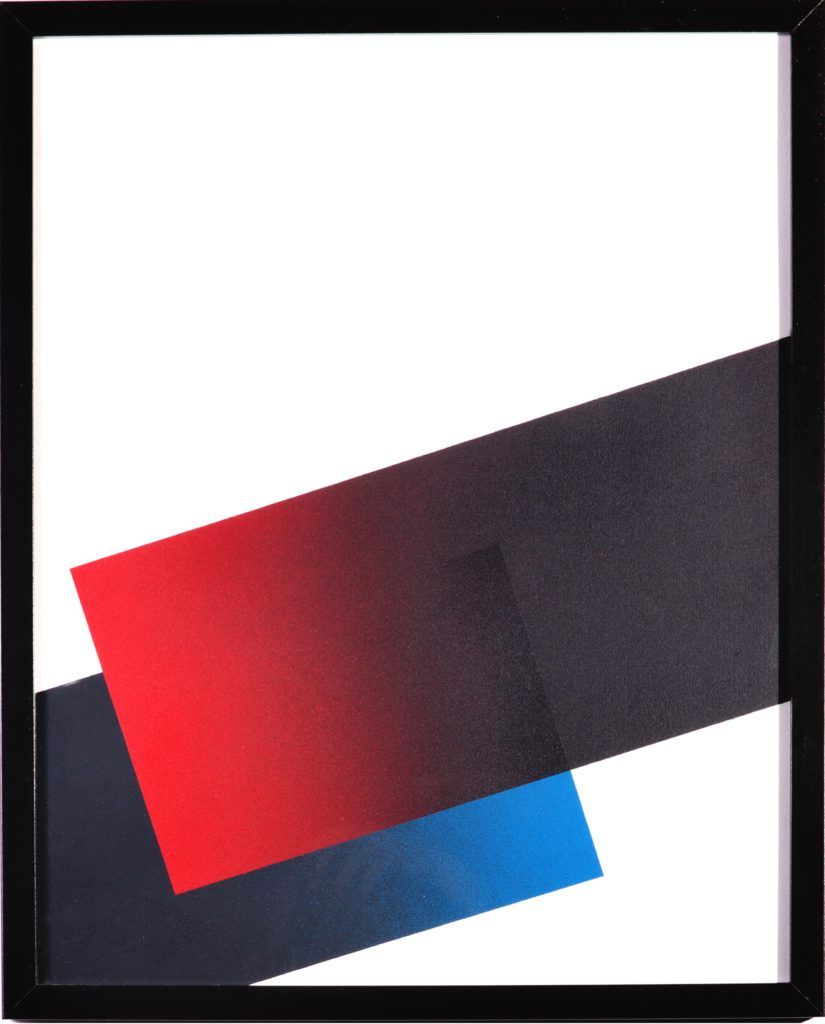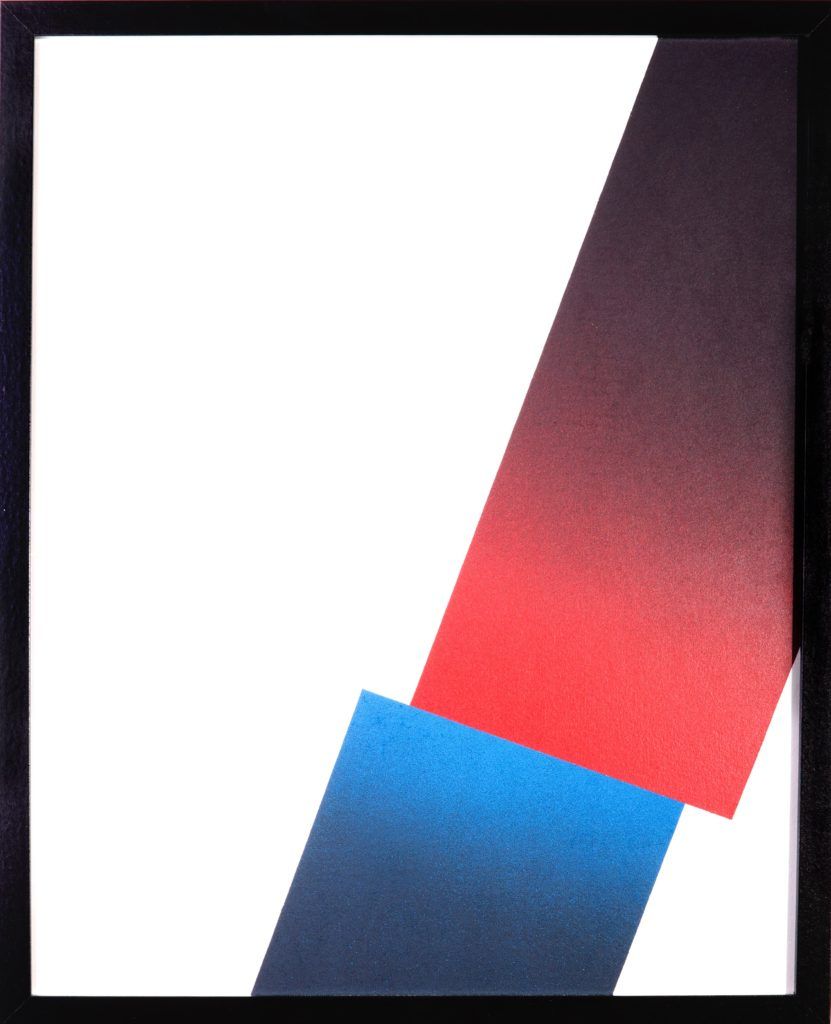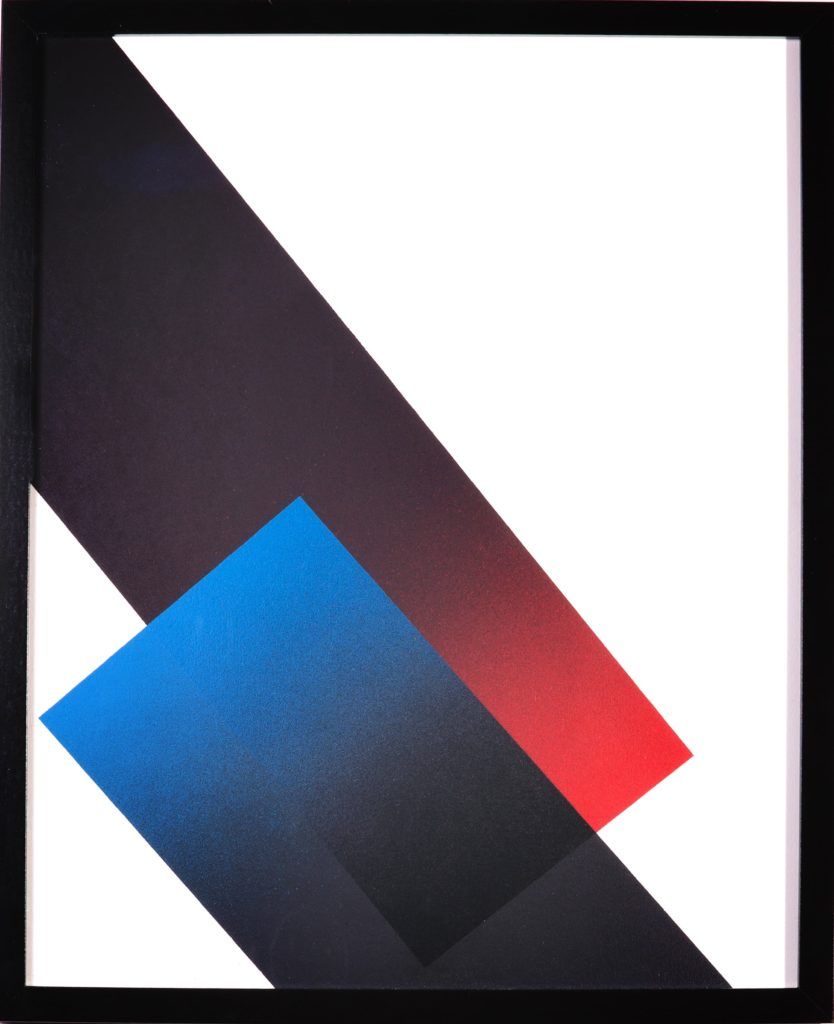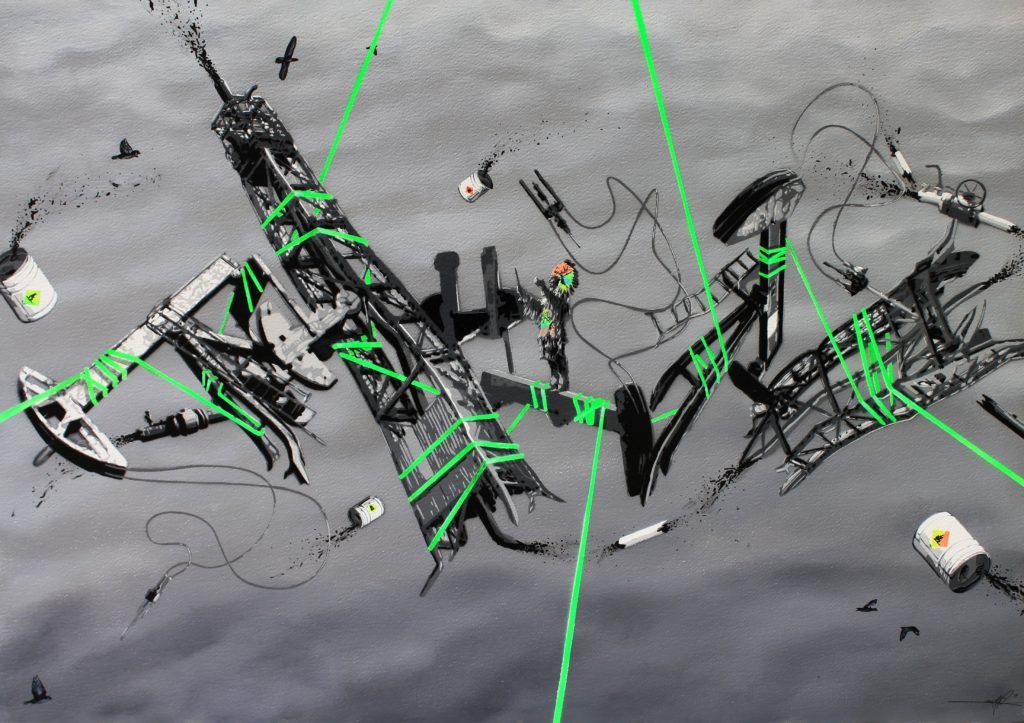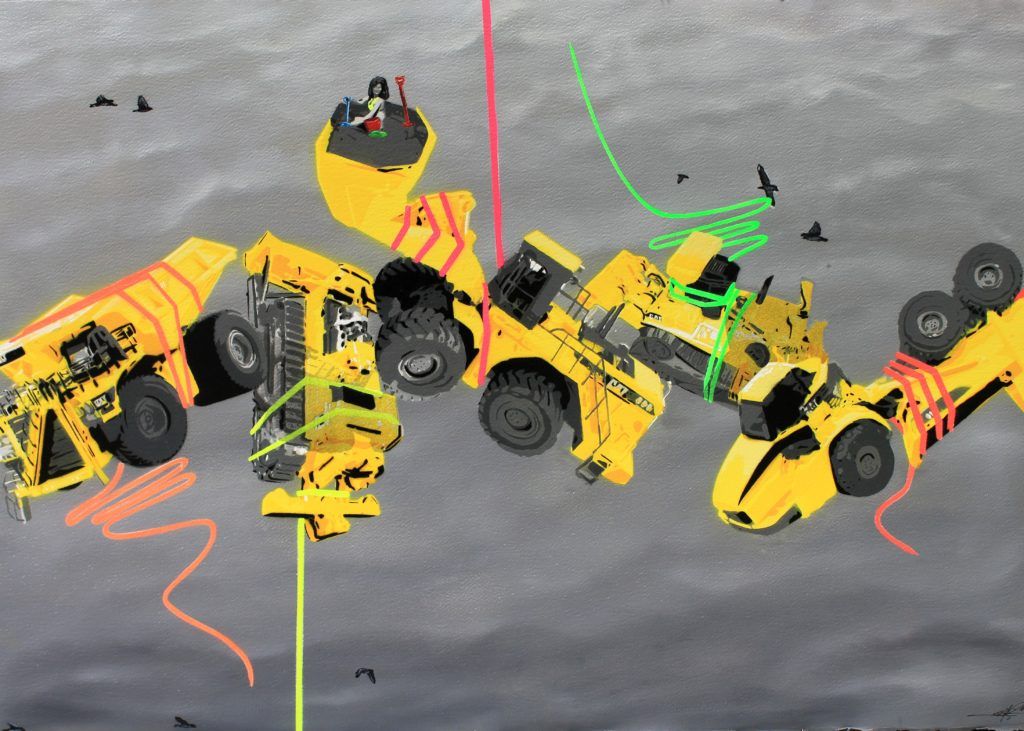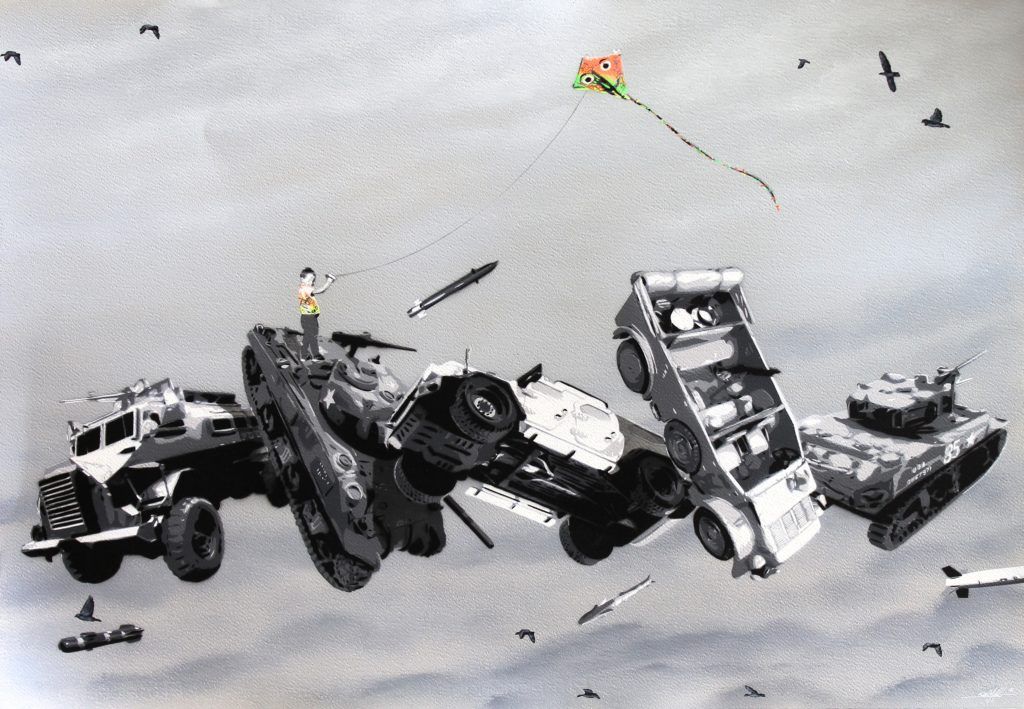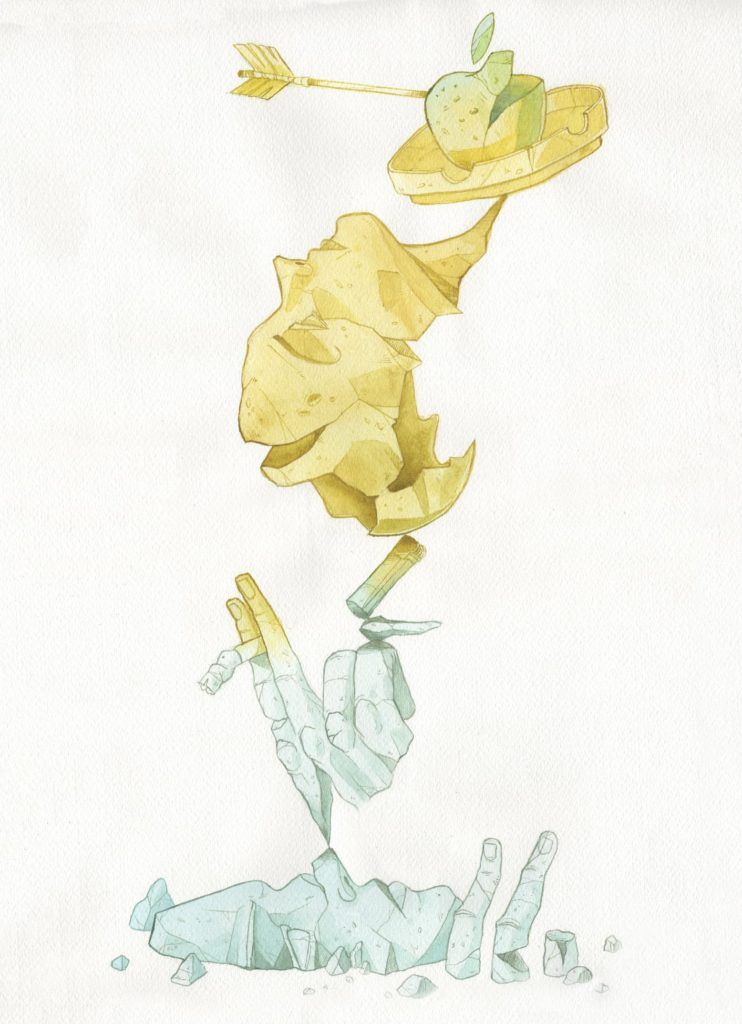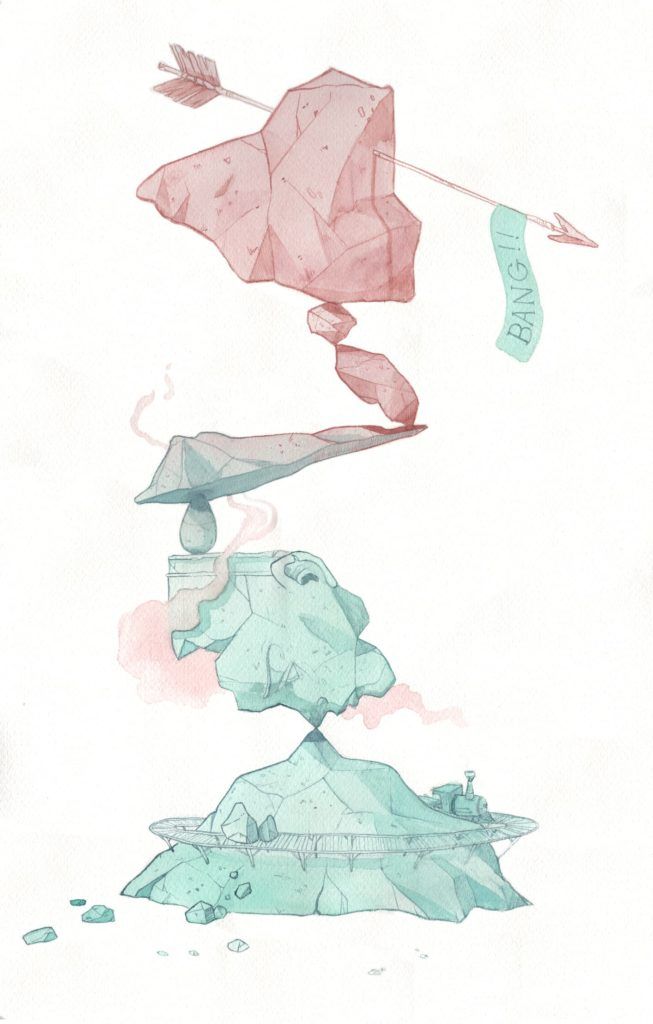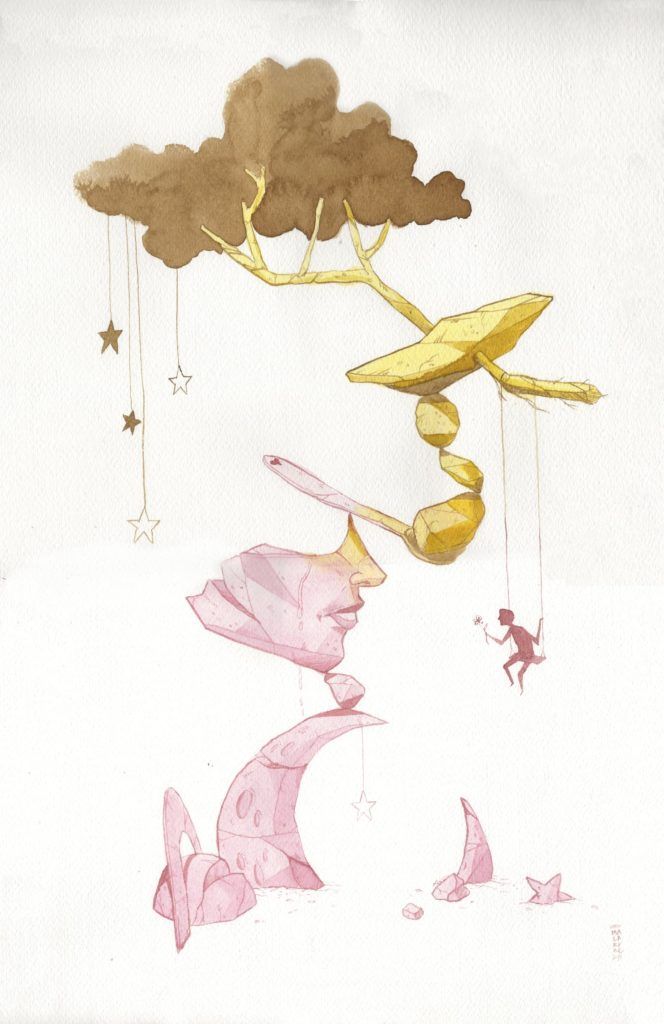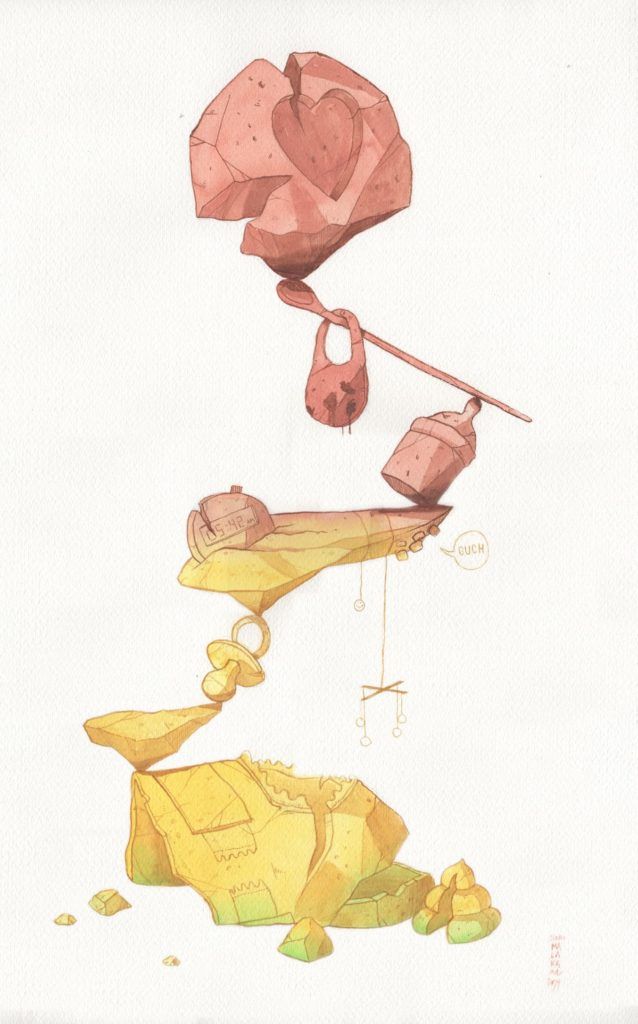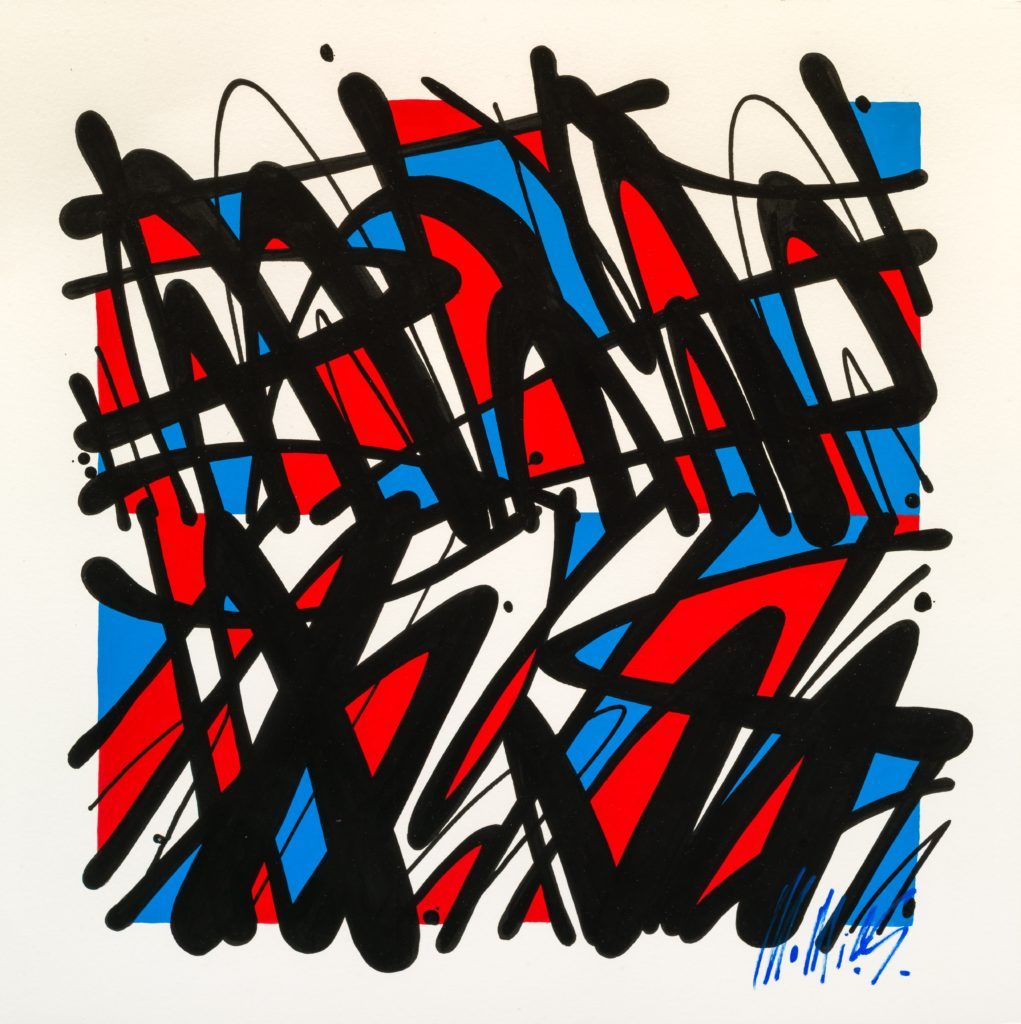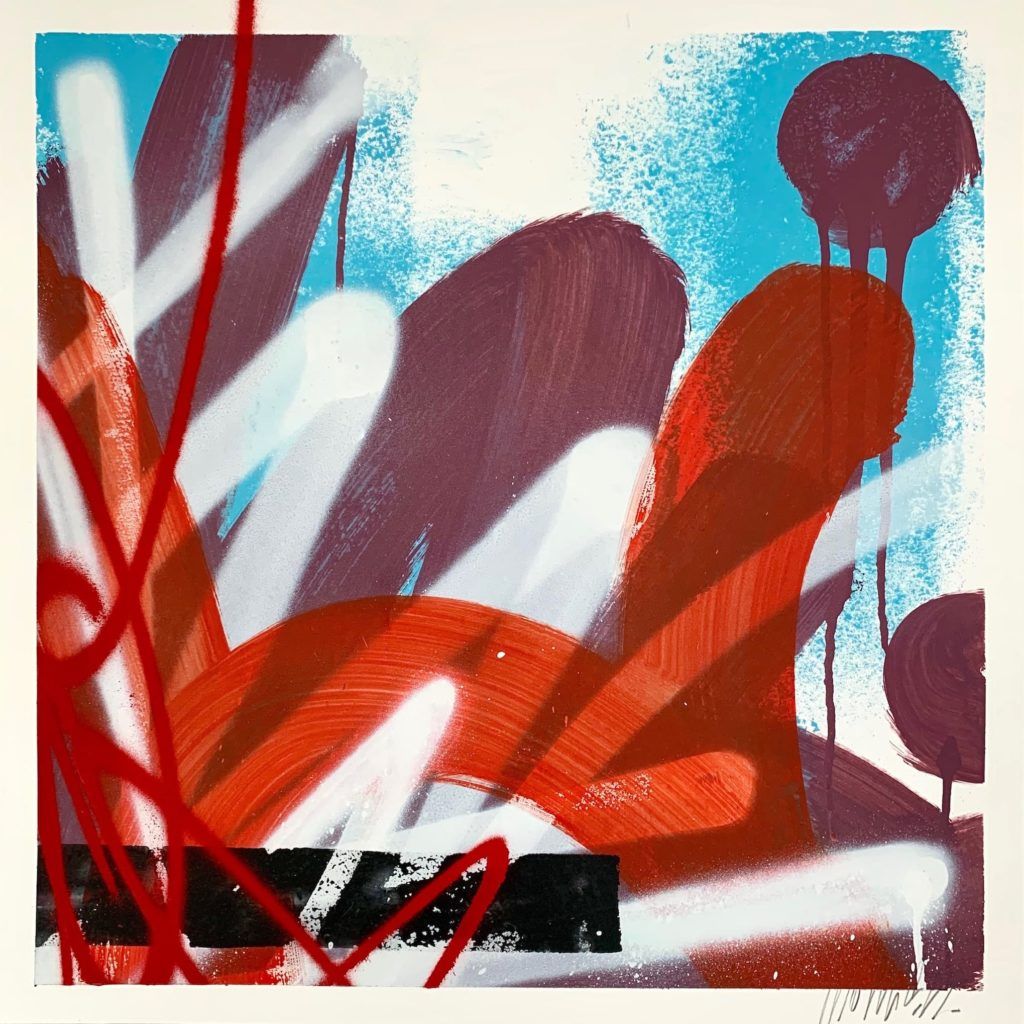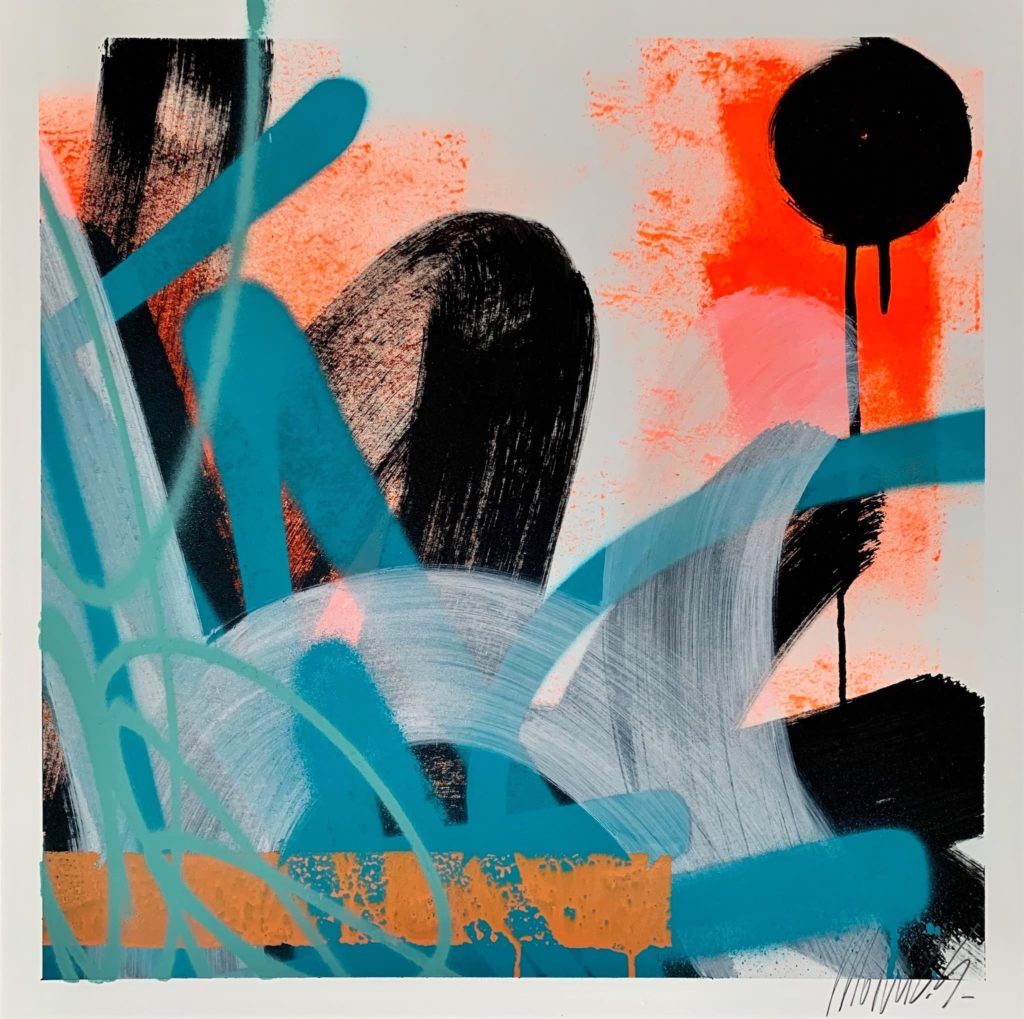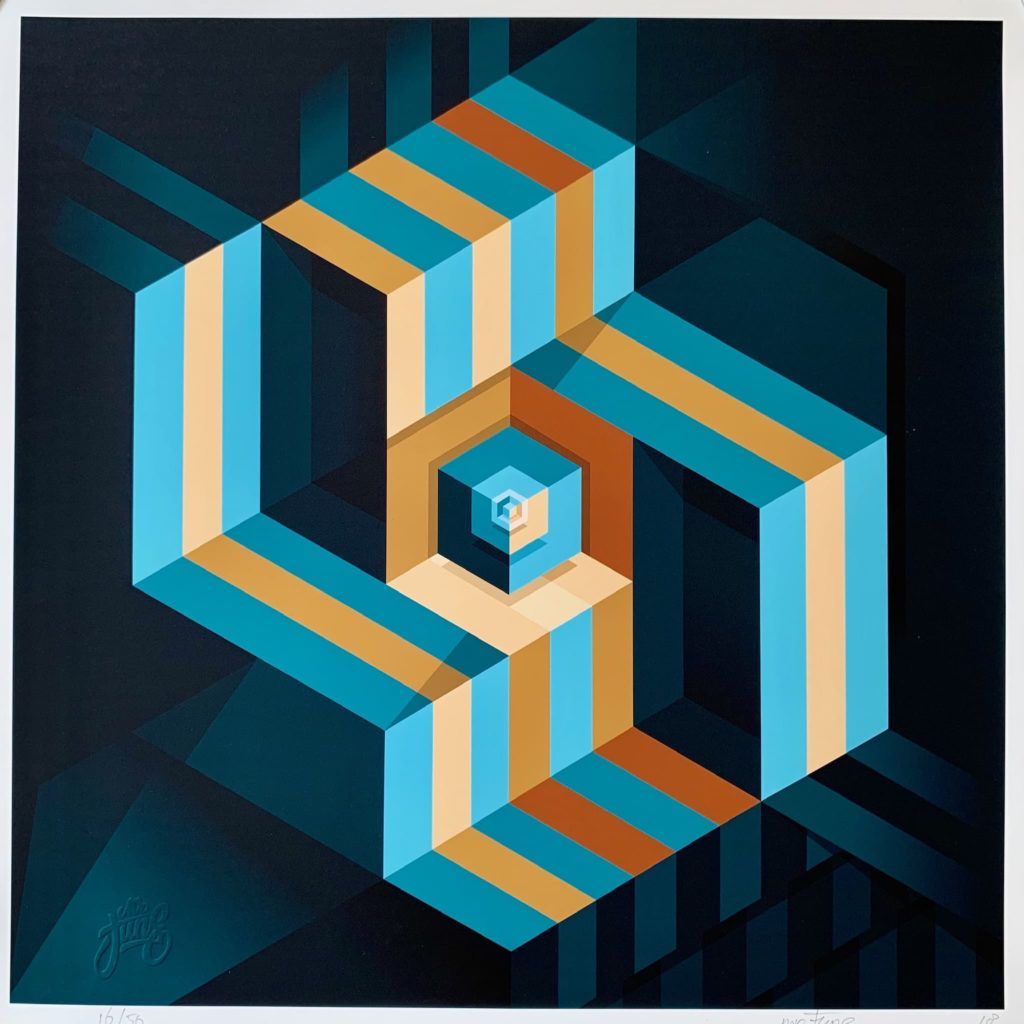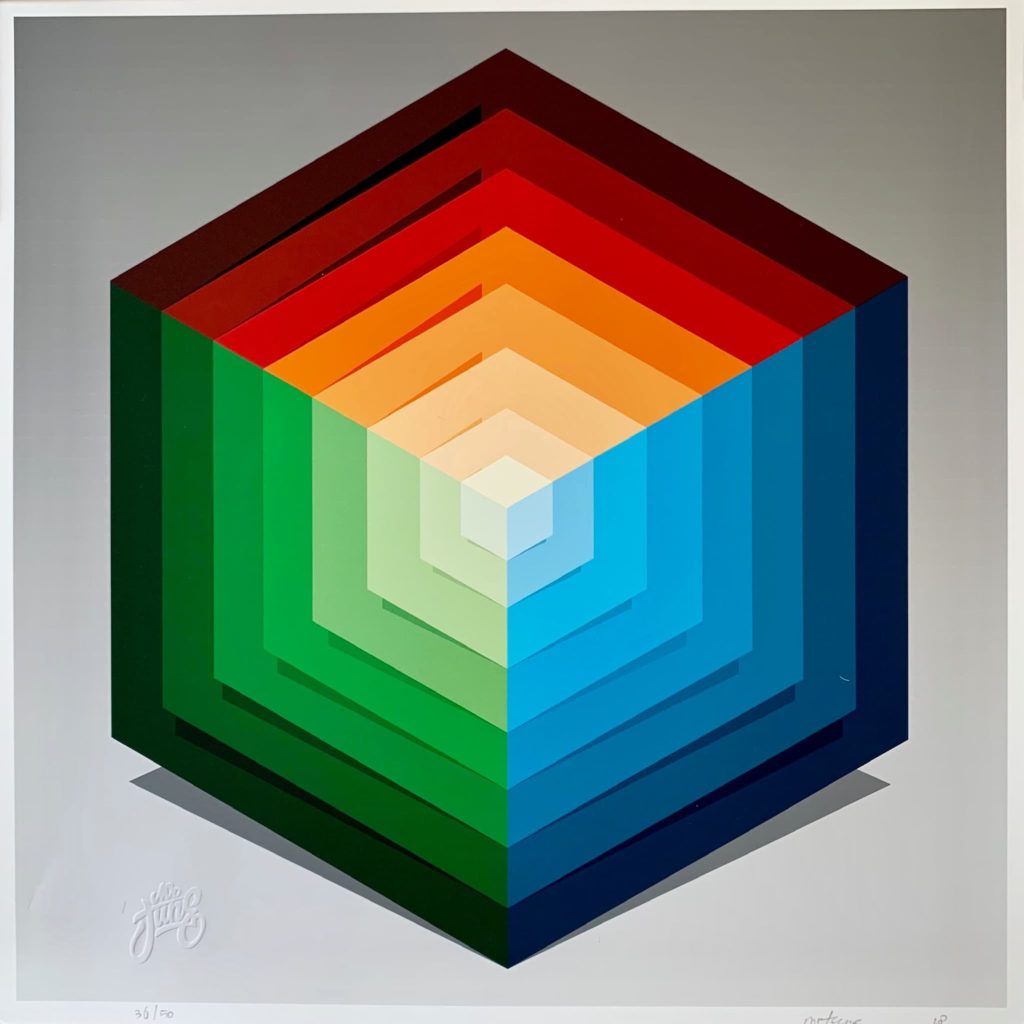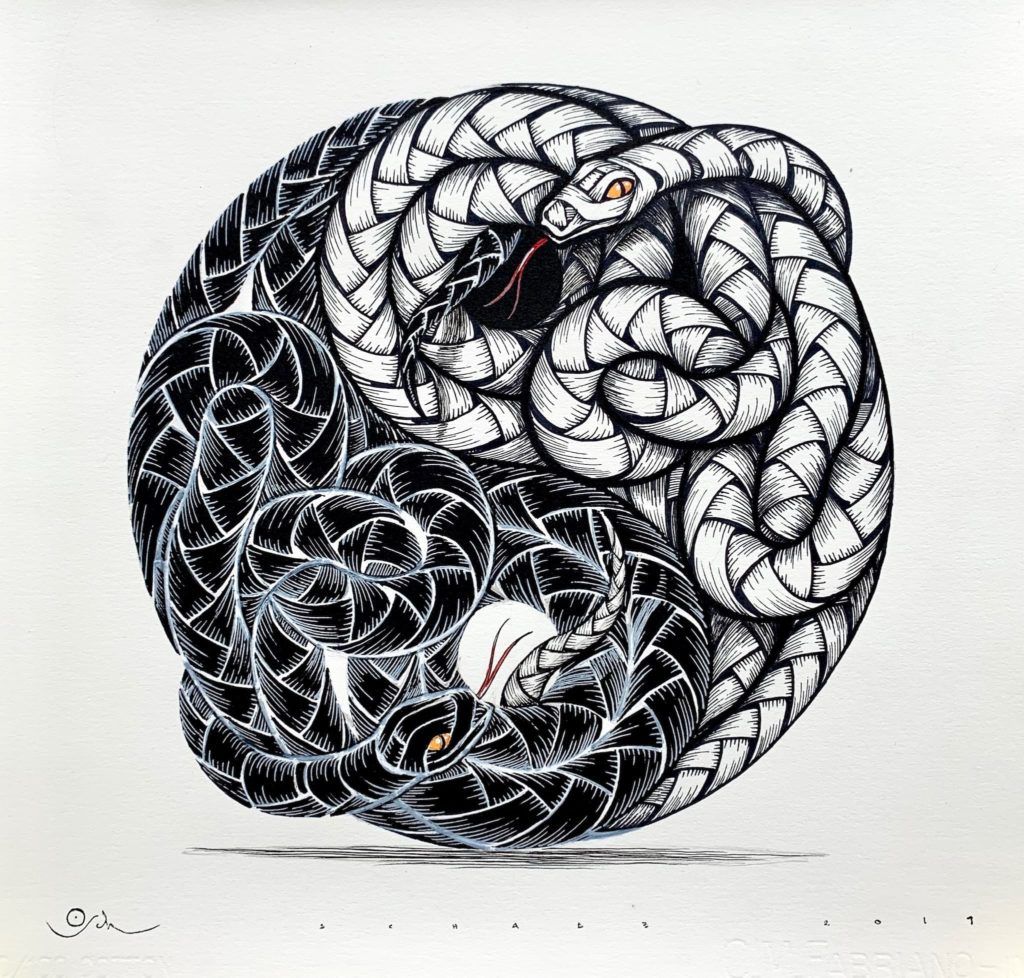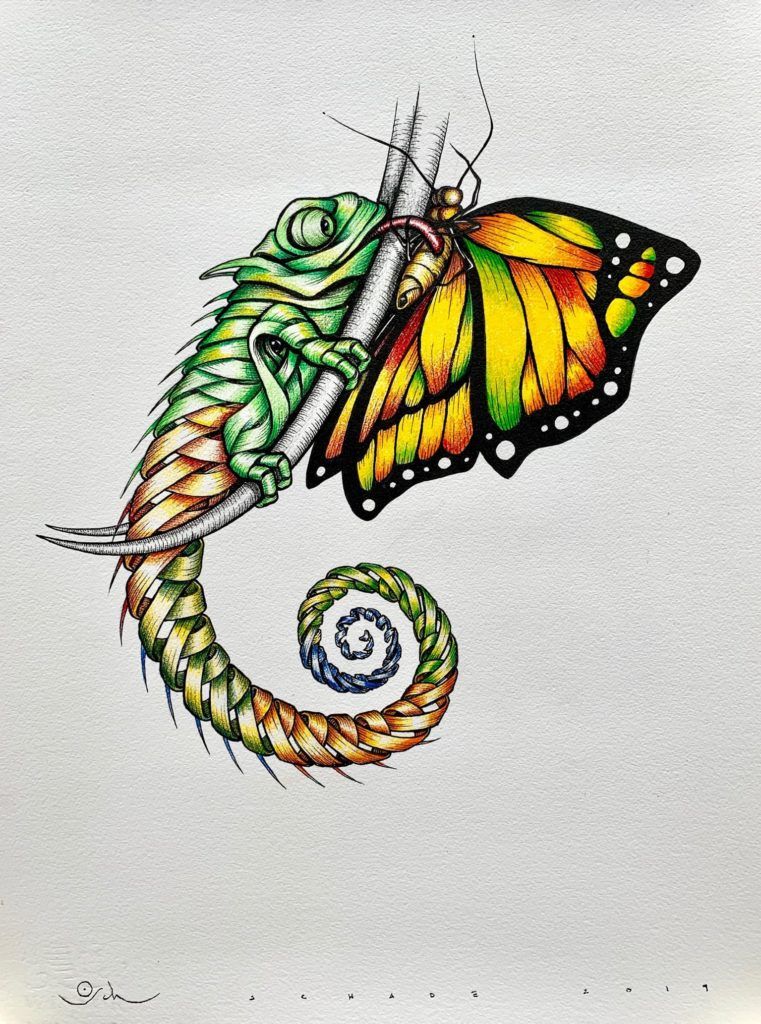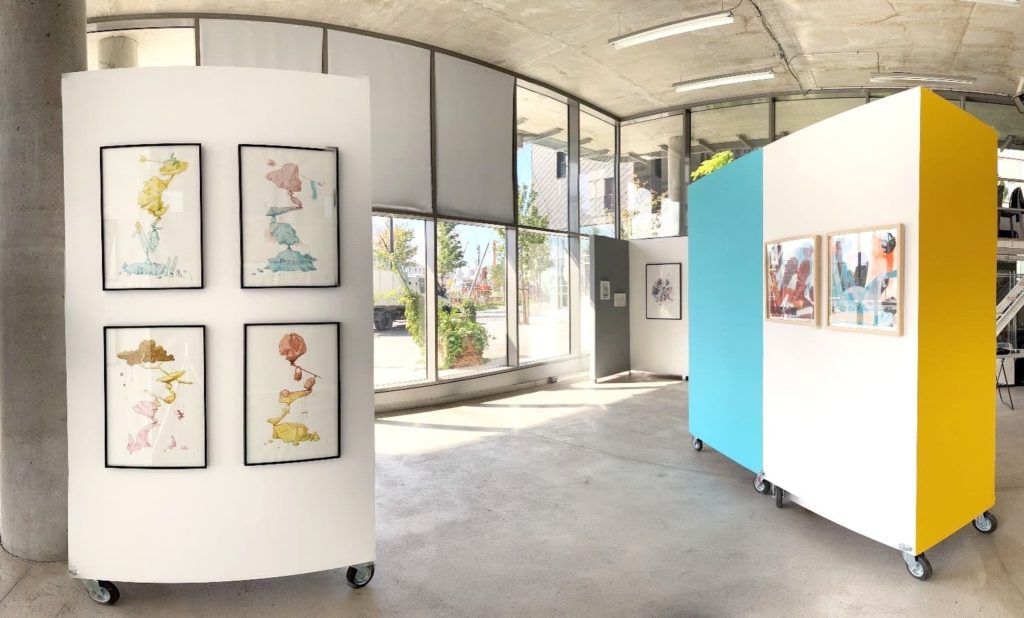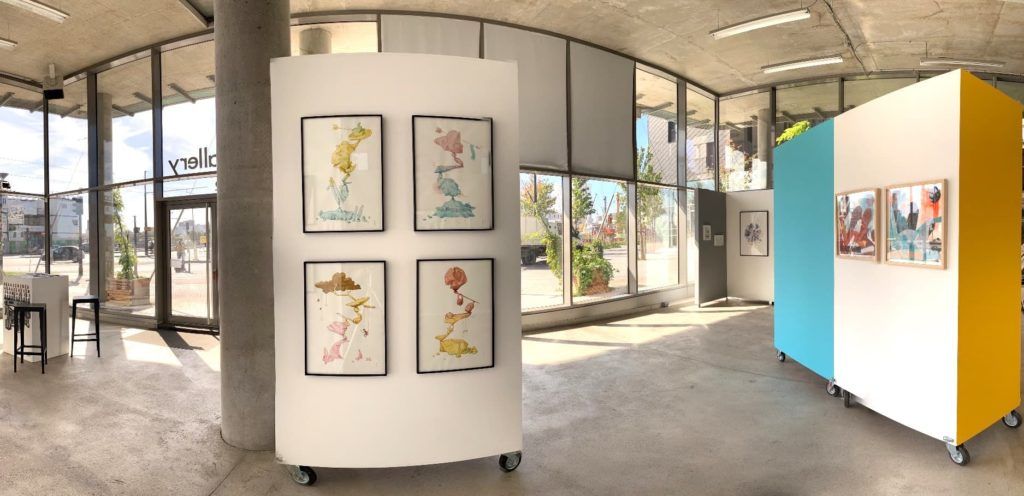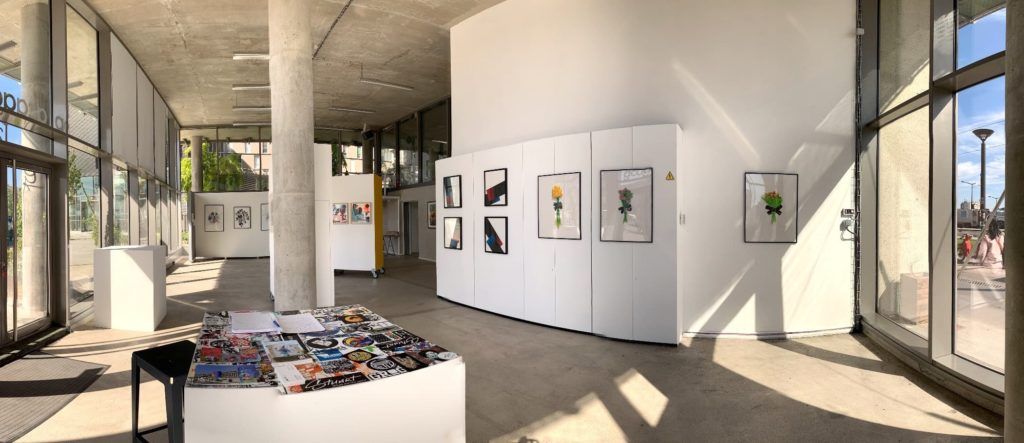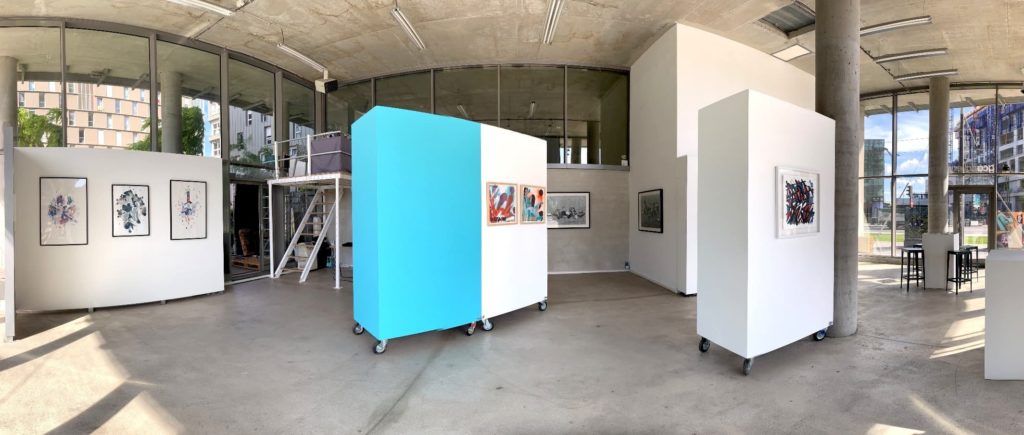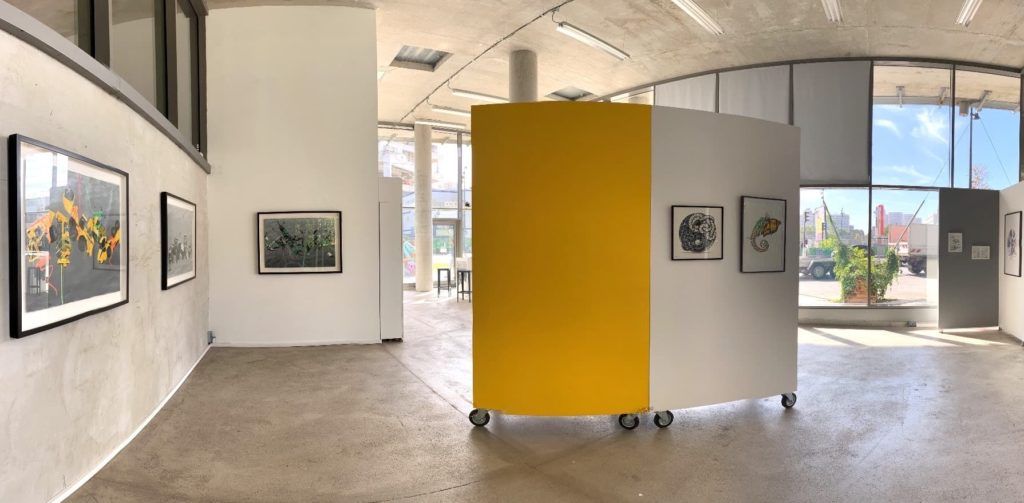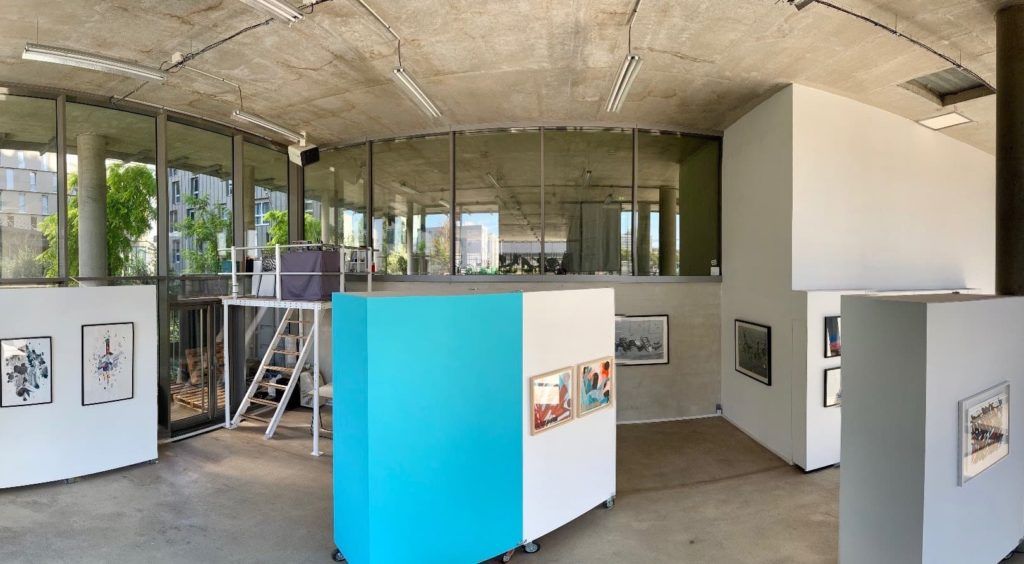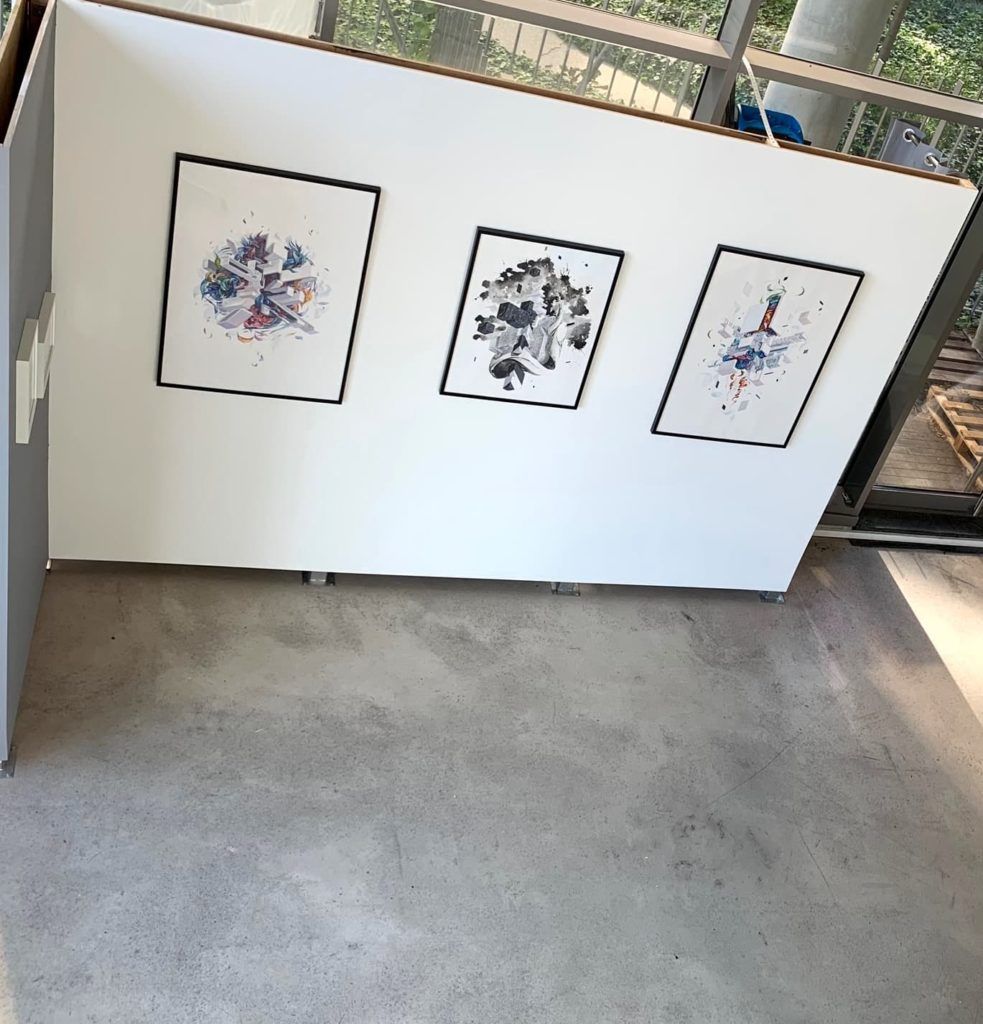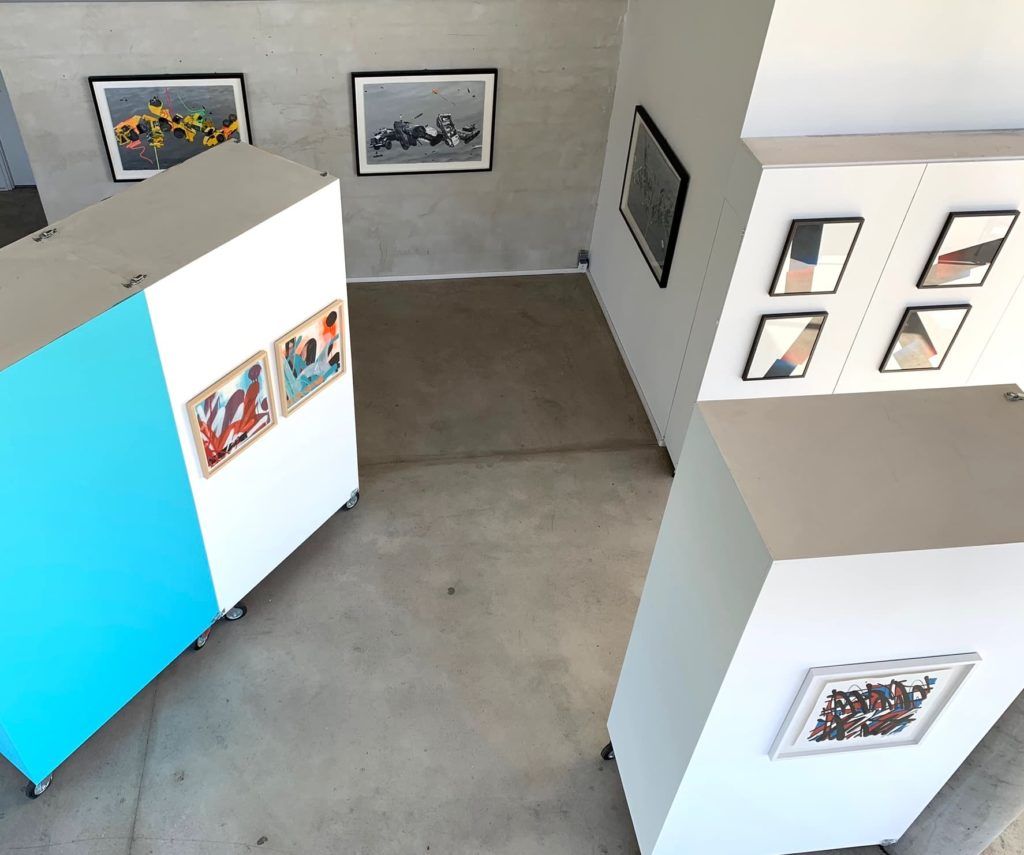Equilibrium is the state of what is subjected to countervailing forces where the parts are equal, where no force surpasses the others. It is the fair distribution, the right proportion, the stability between opposite elements. It must result from balance, a harmony. The distribution of the lines, masses, solids and voids of a composition must ensure that the overall arrangement of a work is coherent.
The GCA Gallery Paris, presents a group exhibition with 9 artists: Dotmasters, Dzia, Etnik, Greg Jager, Kurar, Malakkai, Momies, Mr June and Otto Schade.
These artists have studied the question of equilibrium/balance and have produced for this exhibition, works exclusively on paper.
Balance is also a dynamic state, a subject in its own right. The rhythm or movement of the subject of a work sometimes leads the viewer to ask questions about the composition of the work as a whole. Etnik’s pieces perfectly illustrate this idea with their floating geometric shapes whose energy starts from a central point and extends outwards.
Kurar traps our gaze by binding in the air, by simple fluorescent threads, heavy objects. In his works, he defies the laws of Newtonian physics to which we are accustomed, to transport us in his infantile and contesting imagination.
Momies, by mixing different pictorial techniques and different mediums, by a painting that is both gestural and meticulous, harmonizes its abstract composition of its modules. The rhythm of the movements calms down or accelerates, the transparencies and superimpositions participate in the good reading of the works.
The precarious balances of Malakkai challenge us in his drawings. There is a surrealist influence in which poetry, precarious equilibrium and dreamlikeness mingle.
The structure of a work is very important if it is to be legible and coherent while being original. Otto Schade combines and fuses distinct animal forms, the result of which is a different interpretation of the subject. The precision of his lines and the perfect proportion of his proportions invite the eye to wander both above and in the work.
Dzia also handles the idea of the bestiary very well; here his compositions speak to us in a much more direct way. The delicacy and the poetry of his drawings reside mainly in his so identifiable treatment of the fauna. He achieves a certain balance of his arrangements with simple and abstract pictorial artifices that harmonize all his works.
Wanting to pay homage to the inventor of a certain type of tape, Dotmasters, in his series “Stick em up” consciously composes images that would be incoherent outside the artistic framework. He uses his technical prowess in realism, which he achieves with his precisely cut stencils, to “stick” vertically, using tape, various objects – here carnations, daffodils or tulips. The life that emerges from his paintings on paper, these bouquets in balance on a wall, pushes the spectator to wonder if he is not in front of a photography.
Finally, Greg Jager, seeks a balance of shapes and colors according to the influences of the suprematist and constructivist painters. By using simple geometric shapes and a limited chromatic scale, he structures his work around a flat and deep dynamism.
The notion of balance in a plastic work is inseparable from the physical experience of our everyday life. Artists, with their creativity and sensitivity, succeed in blurring our senses in a subtle way.
“The details are perfection, and perfection is not a detail.” Leonardo da Vinci
